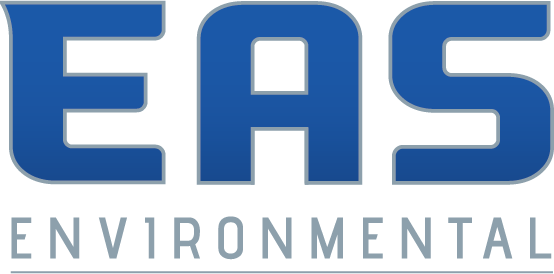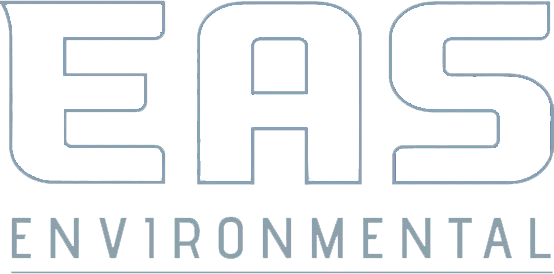BLOG

In today’s world, we believe that true success comes from more than just business growth — it’s about giving back and making a real difference where we live and work. At EAS Environmental LLC, we’re proud to be a full-service disaster restoration and environmental remediation company based in the Charleston, South Carolina region. While our work focuses on restoration, abatement, and remediation, our mission goes far beyond that. Every project we take on is driven by a deeper purpose: to help build safer, healthier environments for our neighbors, especially those most vulnerable to environmental risks. Below we’ll explore how EAS Environmental is making a difference — and then identify five key pillars of corporate responsibility in action.
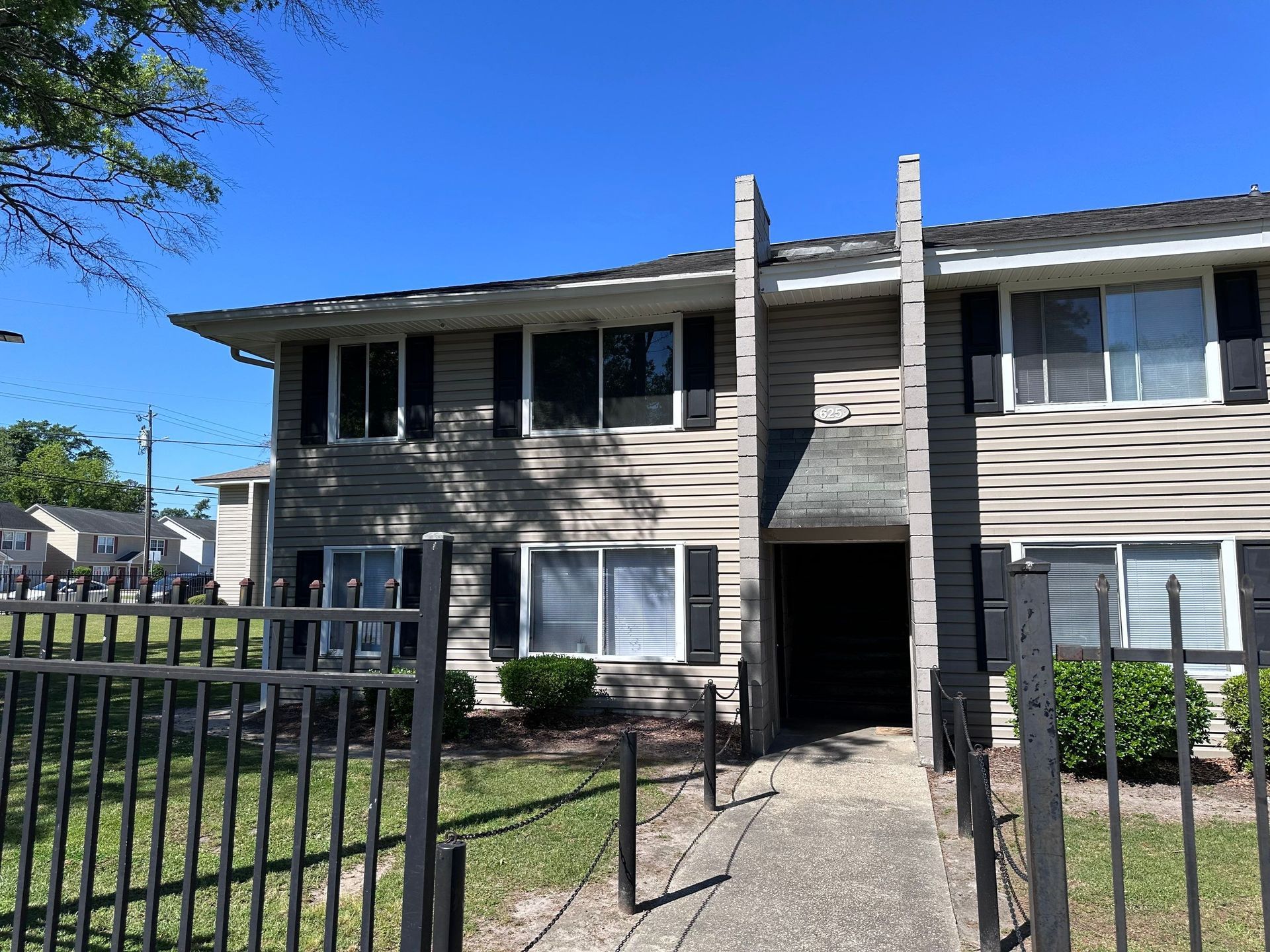
Restoration work can feel overwhelming—especially when you’re staring down the aftermath of a flood, fire, or hazardous material exposure. At EAS Environmental, we believe that transparency and trust are key. That’s why we’re pulling back the curtain on what a real restoration project looks like when you work with our team—from the first call to the final walkthrough. Our goal is to help you understand every step of the process, so you know exactly what’s happening and why. With decades of experience and a commitment to safety, we make sure your property is restored the right way—the first time. By the end, you’ll not only have a clean, safe space again but also the peace of mind that comes from knowing it was done properly. Abstract: A grease fire broke out in the kitchen of a Florence apartment, spreading smoke and soot to the walls, ceilings, and floors throughout the second-story residence. Just your typical fire mitigation job, right? Wrong; after some third-party sampling and laboratory analysis, Asbestos-Containing Materials (ACMs) were identified in the apartment. In this case study, we walk through how our company, EAS Environmental, handled the turn-key process of the asbestos abatement, and then rebuilding the property to its pre-loss condition. From navigating complex environmental regulations to coordinating restoration timelines, this project showcased the importance of expertise, communication, and precision in every phase. This article highlights how our team transformed an unexpected challenge into a seamless, compliant, and fully restored living space. The Situation: Fire Damages Disturb Asbestos Containing Materials The tenant accidentally started a grease fire in the kitchen of their second-story Florence apartment. The good news: no one was seriously injured. The bad news: the fire left behind significant damage – smoke and soot coating every surface in every room. Fire mitigation projects happen every day, but not all of them come with an unexpected condition lurking beneath the layers of soot and smoke.
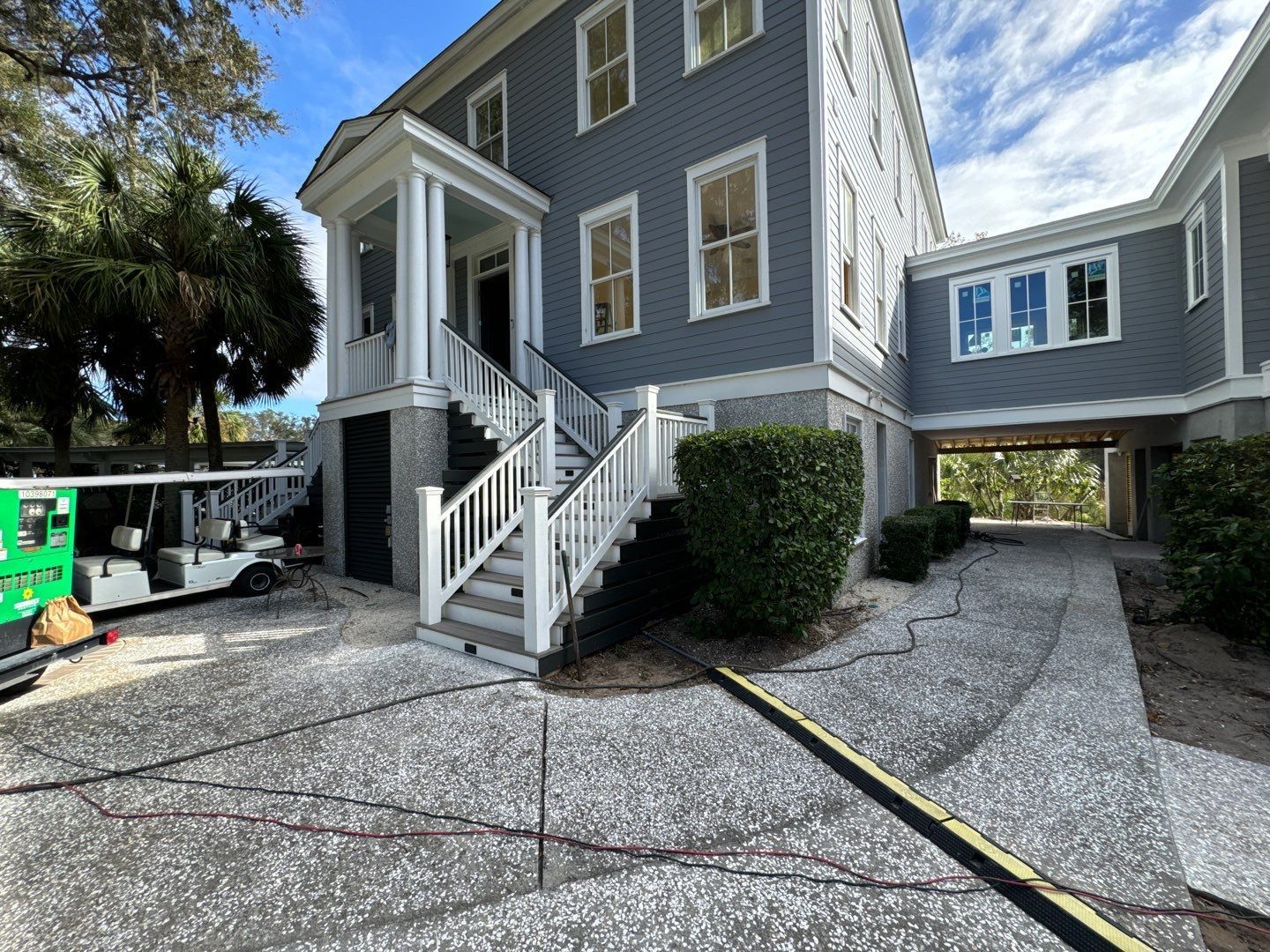
It doesn’t take a massive fire to cause a lot of damage. In fact, even a small electrical fire can fill your entire home with thick smoke, leaving behind soot on surfaces and that stubborn burnt smell that just won’t go away. That’s exactly what happened in one home we recently worked on—and it’s a great example of how EAS Environmental steps in quickly with expert fire damage mitigation and structural cleaning services to make things right again
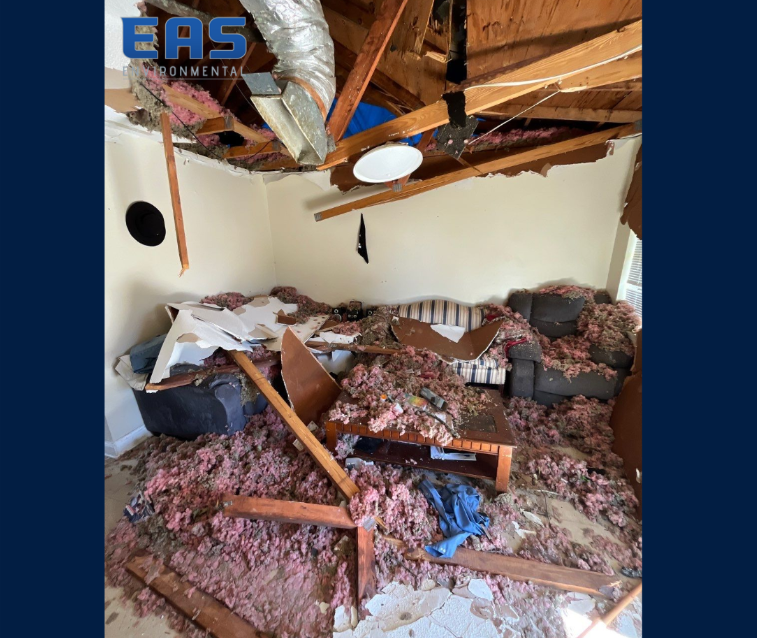
Asbestos was once hailed as a “miracle material” for its heat resistance, durability, and insulating capabilities. For decades, it was widely used in residential construction—especially in insulation, floor tiles, roofing materials, and textured ceilings. However, growing awareness of its severe health risks prompted a series of regulatory crackdowns. So, when was asbestos banned in homes? The answer isn’t straightforward—but knowing the history is essential for homeowners, renovators, and anyone living in a home built before 1990. Asbestos Use in Residential Construction: A Historical Overview Asbestos use in homes peaked between the 1930s and the 1970s. It was commonly found in: Insulation (especially around pipes and ducts) Vinyl (VCT) floor tiles and adhesives (mastic) Roofing shingles and flashing Cement siding (“transite”) Acoustic ceiling tiles Popcorn ceiling texture Joint compounds - like those found in typical drywall Cement products Although concerns about asbestos exposure surfaced as early as the 1960s, it wasn't until the late 1970s and 1980s that its use began to be seriously curtailed - but not eliminated. When Was Asbestos Banned? Contrary to popular belief, asbestos has not been fully banned in the United States. Instead, its use has been heavily restricted through a series of phased regulations: 1973: The EPA banned spray-applied asbestos-containing materials for fireproofing and insulation. 1977: The Consumer Product Safety Commission banned asbestos in wall patching compounds and artificial fireplace embers. 1989: The EPA issued a full ban under the Asbestos Ban and Phase-Out Rule—but it was largely overturned in 1991. Present Day: Many asbestos-containing materials are no longer manufactured or sold, but asbestos remains legal in certain products under strict regulation. Because of this phased and partial ban, asbestos-containing materials can still be found in homes built as late as the 1980s—and even later in some imported materials. How Do I Know If My Home Contains Asbestos? If your home was built before the mid-1980s, there's a high chance it may contain asbestos. However, asbestos is not dangerous unless it is disturbed and becomes airborne. Common risk scenarios include: Renovation or demolition of older homes Damage to aging building material DIY repairs involving insulation or flooring Professional asbestos inspection and testing are the only reliable ways to confirm its presence. Where Can Asbestos Still Be Found in Homes? Even homes built into the 1980s or early 1990s may contain asbestos. It’s often present in: Popcorn/textured ceilings Vinyl tiles and mastic adhesives Duct and pipe insulation Roofing and siding materials Joint compound used in drywall taping What EAS Environmental Can Do to Help At EAS Environmental, our certified professionals specialize in: Asbestos inspections and risk assessments Sample collection and laboratory testing Safe asbestos abatement and removal Post-removal air quality verification We adhere strictly to federal and state guidelines, ensuring that any asbestos-containing materials are handled safely and effectively. Don’t Take the Risk—Test Before You Renovate Whether you’re planning a renovation or simply want peace of mind, understanding your home's asbestos risk is crucial. Ignoring potential exposure can lead to serious health issues like mesothelioma, lung cancer, and asbestosis. Contact EAS Environmental today to schedule a professional inspection and safeguard your property and your health. FAQ – Common Asbestos Questions Q: Is asbestos still used today? A: Yes. Some imported products may legally contain asbestos (e.g., brake pads, roofing, gaskets). Q: Can I test for asbestos myself? A: DIY kits are available but unreliable. Disturbing the material could create a health risk. It is best to consult with a certified professional. Q: What’s the safest way to remove asbestos? A: Consult with licensed abatement specialists who follow EPA and OSHA standards. Q. Can I find asbestos on new homes? A: Yes. Some newer homes may still contain asbestos in imported materials, leftover stock, or legal non-friable products like certain floor tiles or roofing materials. References 1. U.S. Environmental Protection Agency (EPA) Asbestos Laws and Regulations: https://www.epa.gov/asbestos/asbestos-laws-and-regulations 2. Occupational Safety and Health Administration (OSHA) Asbestos Fact Sheet: https://www.osha.gov/sites/default/files/publications/OSHA3507.pdf 3. Consumer Product Safety Commission (CPSC) Banned Hazardous Products: https://www.cpsc.gov/Business--Manufacturing/Business-Education/Business-Guidance/Banned-Hazardous-Products 4. Agency for Toxic Substances and Disease Registry (ATSDR) Asbestos Toxicological Profile: https://wwwn.cdc.gov/TSP/ToxProfiles/ToxProfiles.aspx?id=30&tid=4 5. National Cancer Institute (NCI) – NIH Asbestos Exposure and Cancer Risk: https://www.cancer.gov/about-cancer/causes-prevention/risk/substances/asbestos/asbestos-fact-sheet 6. Environmental Working Group (EWG) Asbestos Nation Report: https://www.ewg.org/asbestos/
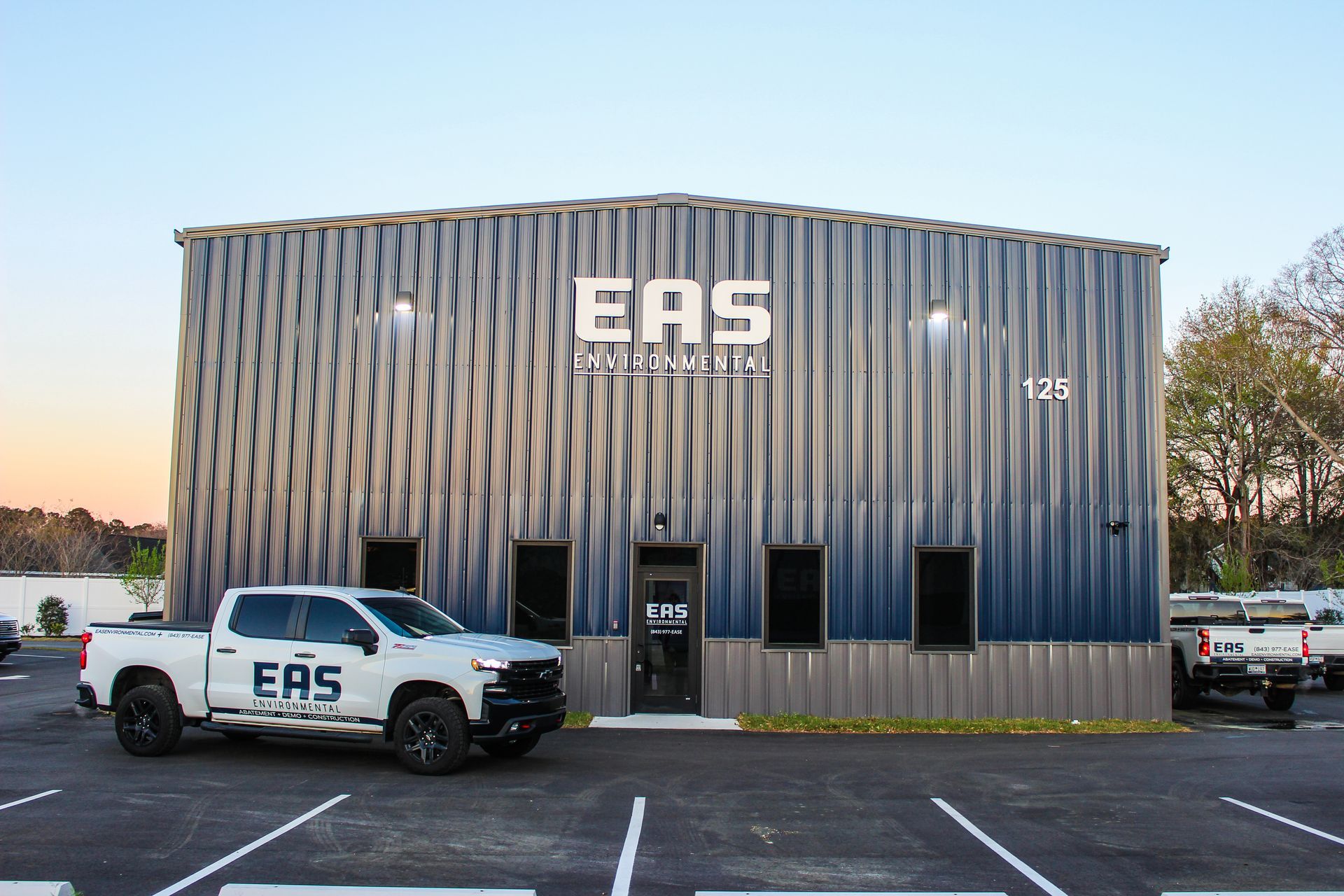
In the restoration industry, your name is everything. Reputation, reliability, and results drive your success — and that’s exactly why restoration companies across South Carolina choose EAS Environmental as their trusted subcontractor. We understand the pressure restoration firms face: tight timelines, unpredictable scopes, complex compliance standards, and demanding client expectations. When you need a partner who enhances — not hinders — EAS delivers quietly, powerfully, and professionally.
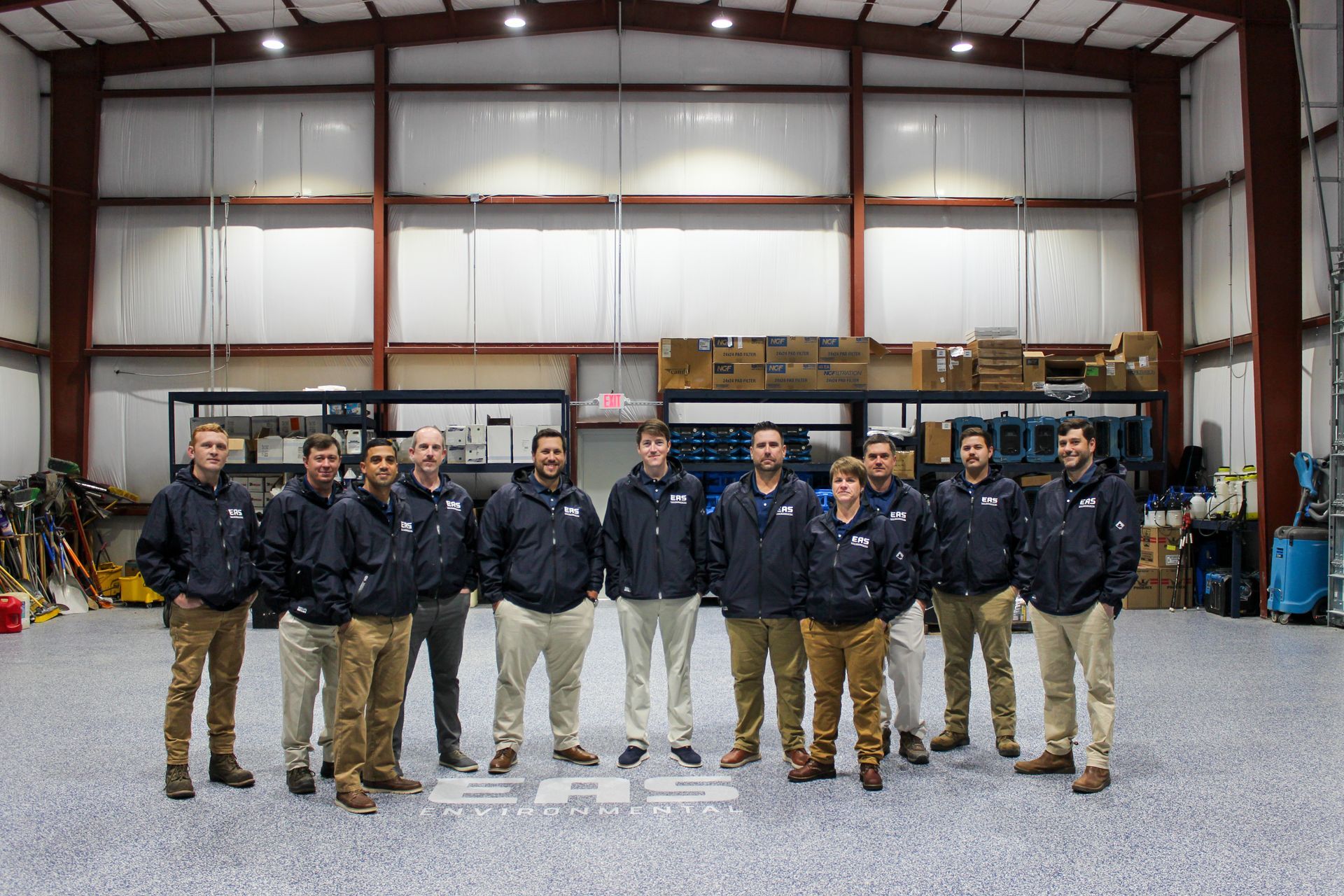
The EAS Environmental Team Our core values are fundamental to our operation and integral to our identity at EAS Environmental (EASE). These principles guide our actions, influence our decisions, shape our culture, and ensure that we consistently deliver outstanding services while maintaining a supportive and dynamic work environment. As we gathered insights from our employees about how these values play out in their work lives, it became evident how integral they are to both our individual and collective successes.
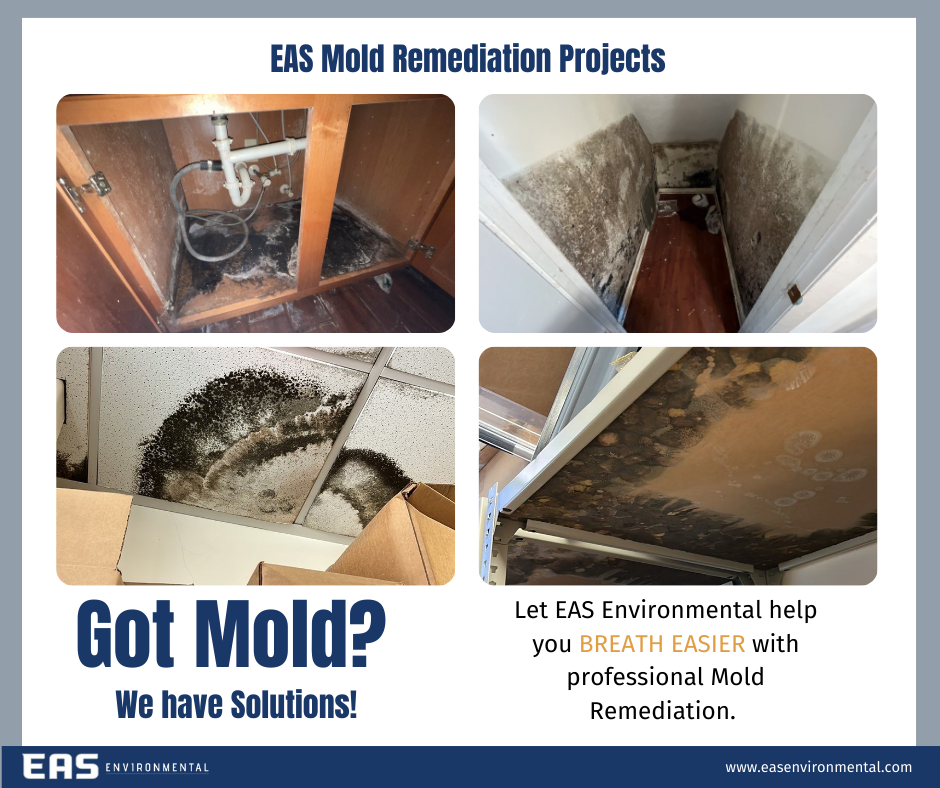
Mold: it’s more than just an unsightly blotch on your walls—it’s a sneaky intruder that can compromise your health and home integrity before you even realize it’s there. At EAS Environmental, we deal with this hidden hazard head-on, combining expertise and empathy to restore safety and comfort to your spaces. Today, we'll dive into the nitty-gritty of mold—what it is, where it lurks, and why it’s a problem—plus, we'll share how our team ensures your environment remains healthy and wholesome.
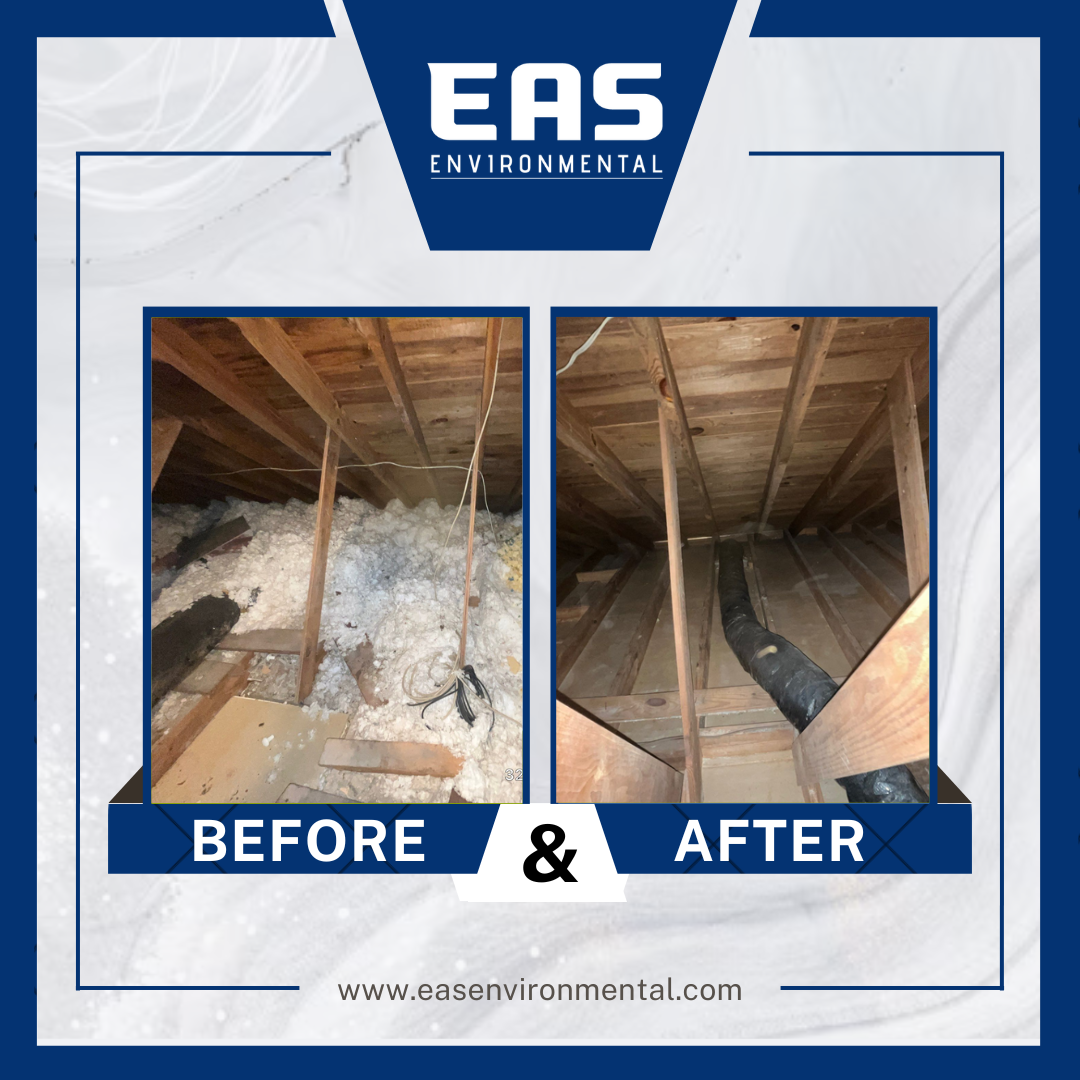
At EAS Environmental, we believe that "Quality is Everything" when it comes to disaster restoration. Disasters are tough, but finding reliable help shouldn’t be. We understand that when you’re facing the aftermath of a disaster, you need a team that prioritizes high-quality work and quick, effective responses. Our motto, "Keep your mind at EASE," is more than just words—it's our commitment to delivering excellent service when you need it most. Quality is at the core of everything we do. From the first phone call to the final walkthrough, we focus on delivering top-notch results that not only meet but exceed your expectations. We strive to restore your property and your peace of mind with precision and care. This commitment to quality ensures that every restoration project is safe, secure, and thoroughly completed, allowing you to return to normal life as quickly as possible. Our team is our greatest asset, and teamwork is central to our success. We believe that teamwork makes the dream work, and this is evident in how we approach each restoration project. Our professionals work closely together, drawing on a diverse range of skills and experiences to deliver the best outcomes for our clients. We also hold each other accountable because we know the importance of integrity in our work. Responding positively to adversity isn’t just necessary; it's essential in our industry. We face challenges head-on, ensuring that every solution we provide is not only effective but also responsible. We listen to your needs and tailor our services accordingly, ensuring that each client feels heard and supported throughout the restoration process. Executing the mission means we do whatever it takes to get the job done right. Using the latest technology and techniques, our skilled and experienced technicians work diligently to restore every property to its pre-disaster condition. We're not just fixing buildings; we're restoring homes and businesses to create safe, welcoming spaces for people to return to. Choosing EAS means choosing a partner who understands the importance of quality, Integrity and Action, and customer service. We are here to help you navigate the difficult times that follow a disaster, providing support and high-quality services that you can rely on. Our focus on quality makes us stand out in the industry, and our commitment to our core values—teamwork, accountability, positive response to adversity, integrity, valuing the customer, and executing the mission—guides everything we do. At EAS, “Value the customer” is of priority to us. This client-first approach is part of our commitment to excellence and drives us to maintain the highest standards in every project. We are also committed to environmental responsibility and use eco-friendly products and practices whenever possible. This approach not only minimizes our environmental impact but also ensures a healthier, safer space for our clients and their families. In conclusion, at EAS Environmental, quality isn’t just part of the job—it's the foundation of our entire approach. We're not just restoring properties; we're rebuilding trust and peace of mind. When disaster strikes, remember to "Keep your mind at EASE" with EAS Environmental, where quality is everything and our team is always ready to deliver.

As a responsible and environmentally conscious company, EAS Environmental LLC is always keen on giving back to the community. We are excited to announce the launch of our inaugural charity golf tournament designed to support the ShelterNet Fire Relief Fund on March 31, 2025 at 10:00 am. The charity golf tournament will be fun-filled event that brings together individuals with a shared passion for environmental preservation and community support. With our renowned golf course at Daniel Island Club, golf enthusiasts will have the opportunity to join in this worthy cause while enjoying a challenging and engaging game of golf. This event provides an excellent opportunity for businesses and individuals to contribute meaningfully to the ongoing efforts of the ShelterNet Fire Relief Fund. By participating in the tournament, sponsors, donors, and attendees can make a valuable difference in the lives of fire victims, helping them transition from devastation to recovery. Together, let's demonstrate the power of collective action as we raise funds and awareness for the ShelterNet Fire Relief Fund. For more information, visit our website at www.charlestonfundraising.com, or you may call us at (843) 460-8391.
